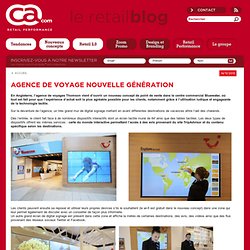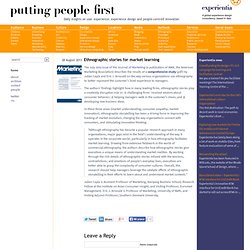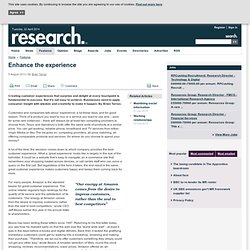

Walkbase sur Twitter : "Specialty retail needs to respond to the demand for an #omnichannel experience: #customer. How can brick-and-mortar retailers avoid boxing in the dark? Even though ecommerce has been growing its presence, physical retail is not disappearing.

According to the estimates by McKinsey & Company, about 85% of retail value is still expected to be generated in bricks-and-mortar in 2025. However, the weakness of bricks-and-mortar, compared to other channels, is that it is currently boxing in the dark. Although, according to Accenture , 72% of retail leaders demand data-driven decisions from their organisations, physical retailers lack the tools to gather actionable insight of their customers’ shopping experience.In order to carry out fact-based improvements, retailers need to understand their customers’ shopping patterns in their stores. The walk-through example from last week explained that a retail analytics solution should be seen as the starting point for developing modern in-store marketing. John is looking to buy a new pair of jeans. You may think that in real life many more variables affect John’s buying journey. Using Big Data And Machine Learning To Enrich Customer Experiences. Witter / ?
Who Owns the Customer Experience in Retail? I had the opportunity to present to a technology company’s advisory board, a table full of eight or nine different retailers, representing the full breadth of retail verticals and sizes.

I ran through the current state of omni-channel, expecting to breeze through the first few and delve deeper into topics like the future of the store. That was not to be. My first topic was “Who owns the customer experience in retail?” And I fully expected it to be a well-worn argument. My intention was to show that marketing is winning the battle for ownership of the customer experience, but that it’s by no means certain. Well. Marketing should own the customer experience in retail. Go ahead. Marketing historically has been in charge of advertising the promotions and deals that merchandisers secured from vendors, and not much else. And then, also because of omni-channel, marketing became important in its own right as the de facto owner of customer data. But, you may ask, what about the CEO? Marketing. Agence de voyage nouvelle génération. En Angleterre, l’agence de voyages Thomson vient d’ouvrir un nouveau concept de point de vente dans le centre commercial Bluewater, où tout est fait pour que l’expérience d’achat soit la plus agréable possible pour les clients, notamment grâce à l’utilisation ludique et engageante de la technologie tactile.

Sur la devanture de l’agence, un très grand mur de digital signage mettant en avant différentes destinations de vacances attire l’œil des chalands. Dès l’entrée, le client fait face à de nombreux dispositifs interactifs dont un écran tactile mural de 84′ ainsi que des tables tactiles. Les deux types de dispositifs offrent les mêmes services : carte du monde interactive permettant l’accès à des avis provenant du site TripAdvisor et du contenu spécifique selon les destinations. Ethnographic stories for market learning. The July 2013 issue of the Journal of Marketing (a publication of AMA, the American Marketing Association) describes the results of a comprehensive study (pdf) by Julian Cayla and Eric J.

Arnould on the way various organizations use ethnography to better represent the customer’s lived experience to managers. The authors’ findings highlight how in many leading firms, ethnographic stories play a creatively disruptive role in: 1) challenging firms’ received wisdom about consumer behavior; 2) helping managers walk in the customer’s shoes; and 3) developing new business ideas. In these three areas (market understanding; consumer empathy; market innovation), ethnographic storytelling has been a driving force in improving the tracking of market evolution, changing the way organizations connect with consumers, and stimulating innovative thinking.
Enhance the experience. Creating customer experiences that surprise and delight at every touchpoint is fundamental to success.

But it’s not easy to achieve. Businesses need to apply consumer insight with wisdom and creativity to make it happen. NRF 2013: du discours « techno » à la.
Ergonomy. Offer. Forrester’s 2010 Customer Experience Rankings « Customer Experie. This is our third year publishing the CxPi.

The 2007 CxPi and the 2008 CxPi rankings were published in Q4. We decided to publish this year’s CxPi in Q1 2010, so we don’t have a 2009 CxPi. The 2010 CxPi ranks 133 organizations across 14 industries: Airlines, Banks, Credit Card Providers, Health Plans, Hotels, Insurance Firms, Internet Service Providers, Investment Firms, Parcel Shipping Services (new this year), PC Manufacturers, Retailers, TV Service Providers, Utilities (new this year), and Wireless Carriers. The CxPi is based on consumer evaluations during November 2009 across three areas: 1) meeting needs; 2) being easy to work with; and 3) enjoyability (see the methodology section below).
Here are the full 2010 CxPi rankings… Barnes & Noble took the top spot in the CxPi rankings for the second year in a row. Retailers take 12 out of the top 20 spots.